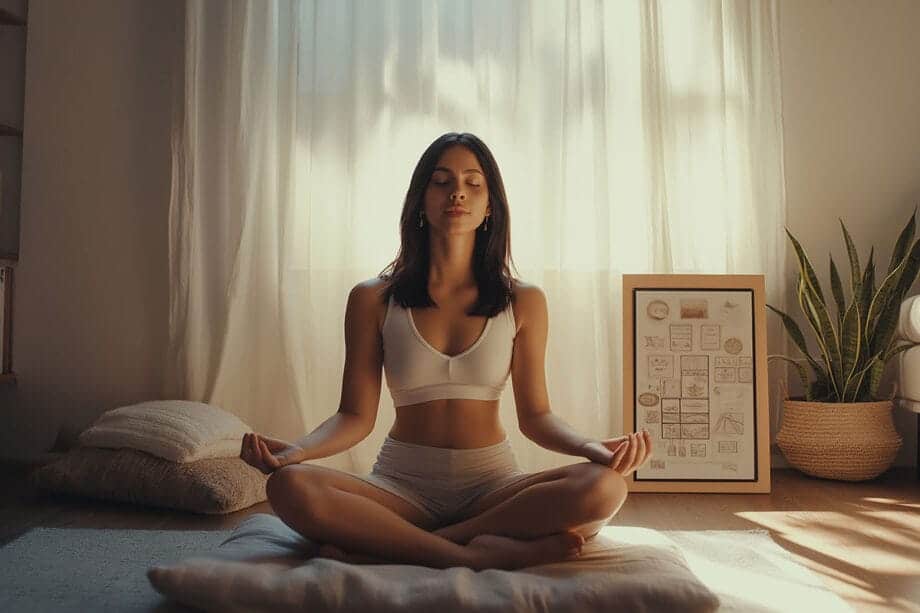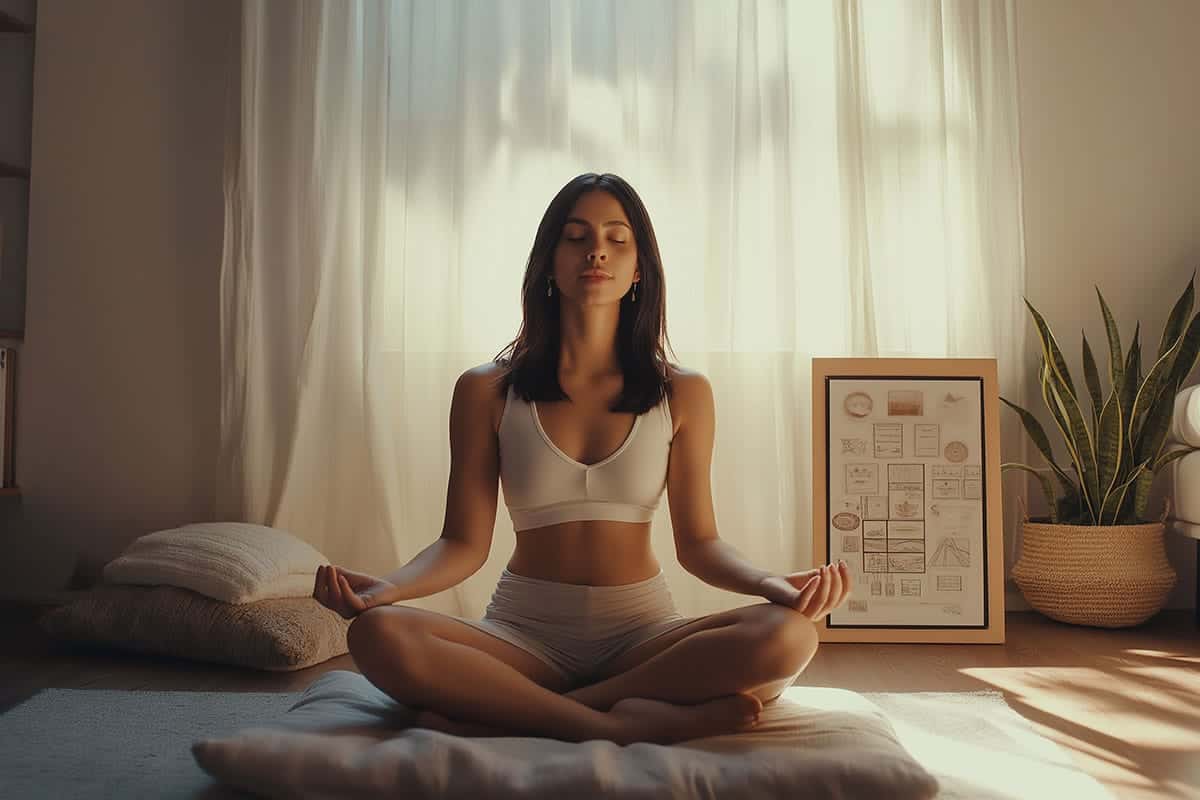Disclosure: Website may contain affiliate links which means if you decide to make a purchase through our link for products or services then we may receive a commission. We participant in the Amazon Services LLC Associates Program, an affiliate advertising program designed to provide a means for sites to earn advertising fees by advertising and linking to Amazon.com. Read More
Creating a meditation space at home can transform your daily practice into a sacred ritual. I’ve found that having a designated area helps me focus and connect more deeply with my thoughts and feelings. Whether you have a whole room or just a cozy corner, the right environment can make all the difference.
Imagine stepping into a serene space filled with calming colors, soft textures, and the gentle scent of essential oils. It’s more than just aesthetics; it’s about creating a haven that fosters peace and mindfulness.
In this article, I’ll share tips on how to design your perfect meditation nook, making it a place where you can escape the chaos and find your inner calm.
Benefits Of A Meditation Space At Home
Creating a dedicated meditation space at home offers numerous advantages that enhance mindfulness practices. It significantly boosts focus and provides a calming environment conducive to meditation. You can read my post on Mindful living to explore the subject more.
Mental Clarity
A designated meditation space at home can help promote mental clarity. Consistent meditation in the same space encourages the mind to associate that environment with deep focus and tranquility.
Research shows that individuals who meditate in a specific location report improved cognitive function and enhanced problem-solving abilities. Regular practice in this space can lead to greater awareness and better decision-making skills.
Stress Reduction
Establishing a meditation space aids in stress reduction. This environment creates a sanctuary away from daily distractions, allowing for deeper relaxation. Studies indicate that creating a calming atmosphere through soft lighting, comfortable seating, and soothing elements decreases cortisol levels, the hormone associated with stress.
Regular use of this space enables individuals to manage anxiety and promote emotional resilience effectively.
Designing Your Meditation Space
Creating the perfect meditation space requires careful thought about location and essential elements. A sanctuary designed for calm enhances focus during practice and fosters a deeper sense of connection.
Choosing The Right Location
Choosing the right location for my meditation space at home plays a crucial role. I prefer a quiet corner of my home, away from distractions and noise. Natural light promotes a serene atmosphere, so I consider positioning near a window.
If available, a dedicated room offers additional privacy. Accessibility is essential; I want to reach this space easily for daily practice.
Essential Elements
Incorporating essential elements elevates the meditation experience. I begin with a comfortable seating option, such as a cushion or yoga mat. Soft textiles, like blankets or pillows, enhance comfort and warmth. Calming colors on the walls, such as blues or greens, create a soothing visual environment.
Natural elements add to tranquility; plants or a small water feature can bring nature indoors. I often include candles or essential oils for their calming scents, which further promote relaxation.
Minimalism is key; I eliminate clutter to maintain a peaceful ambiance. Comfortable lighting, like soft lamps or fairy lights, sets a warm, inviting tone for meditation.
Incorporating Nature
Incorporating nature into my meditation space enhances tranquility and connection to the environment. By bringing in elements like plants and natural materials, I create a more serene setting conducive to mindfulness.
Plants And Natural Light
Incorporating plants adds life and vibrancy to my meditation area. Greenery such as pothos, peace lilies, or snake plants promotes air purification and reduces stress. Natural light floods the space through windows, elevating mood and fostering a calming atmosphere.
Placing my meditation cushion near a window allows sunlight to warm the area and create a soothing ambiance.
Natural Materials
Utilizing natural materials enhances the overall aesthetic of my meditation space. I choose elements like wood, bamboo, or stone for furniture and decor. These materials evoke a sense of nature and grounding, essential for a peaceful environment.
Soft textiles made from organic materials, such as cotton or linen, offer comfort while remaining environmentally friendly. By selecting natural materials, I ensure my space feels connected to the earth, enhancing my meditative practice.
Personalizing Your Space
Personalizing your meditation space enhances the overall experience by making it uniquely yours. Each element can reflect personal taste and intentions, creating an inviting atmosphere for meditation.
Decor And Color Choices
Decor and color choices play a vital role in setting the mood of the space. I gravitate towards soft, calming shades like pale blues, greens, and warm neutrals that encourage relaxation. Adding accents such as decorative pillows, artwork, or calming wall hangings can create visual interest without overwhelming the senses.
Minimalist designs are effective, allowing the focus to remain on meditation rather than distractions. Incorporating elements that inspire positivity, like affirmations or nature-themed decor, can also deepen the connection to the space.
Meditation Tools And Accessories
Meditation tools and accessories are essential for enhancing practice. I find that items such as cushions or mats specifically designed for meditation provide comfort and support. Using a meditation bench or chair can also be beneficial for those needing additional stability.
Essential accessories include a quality timer or a calming bell to signal the end of sessions. Incorporating tools like a singing bowl or a small altar allows for a personal touch, thus creating an inviting and sacred atmosphere that fosters mindfulness.
Additionally, having access to calming scents through essential oils or incense enhances the sensory experience, making each session more profound and enjoyable.
Maintaining Your Meditation Space
Maintaining a meditation space requires regular attention to ensure it remains conducive to relaxation and mindfulness. I focus on keeping the area clean and organized, as minimal clutter enhances clarity of mind.
Daily tidying up helps remove distractions and preserves the sacredness of the environment.
I also pay attention to the ambiance. I check natural light levels, adjusting window treatments to control brightness and improve comfort. Incorporating soft lighting options allows me to create a soothing atmosphere, particularly during evening meditations.
I make it a point to refresh scents in my meditation space. Using essential oils or incense regularly ensures the area remains inviting. I refresh the scents every few days, depending on the type I choose, to maintain a calming olfactory experience.
I maintain plants in my space, keeping them healthy and full of life. Regular watering and occasional pruning ensure they contribute positively to the atmosphere. Healthy plants not only purify the air but also boost the mood.
I update decor occasionally, aligning with any new intentions or personal growth.This could involve rearranging items, adding or removing decorations, or integrating affirmations that align with my current mindset. These adjustments foster a deeper connection with my meditation practice.
Lastly, I assess my meditation tools periodically. I clean cushions, refill essential oil diffusers, and replace burned-out candles as needed. Ensuring these items are in good condition contributes to a calming and efficient meditation experience.
Conclusion
Creating a meditation space at home is more than just a design choice; it’s a commitment to nurturing my mental and emotional well-being. By thoughtfully curating this sanctuary, I can cultivate a deeper sense of peace and mindfulness in my daily life.

As I personalize my space with elements that resonate with me, I’ll find it easier to slip into a state of relaxation, making meditation a natural part of my routine. Regular maintenance and intentional adjustments will keep the energy flowing and the atmosphere inviting.
Ultimately, my home meditation space at home becomes a haven where I can recharge, reflect, and reconnect with myself, helping me navigate life’s challenges with greater clarity and resilience.




